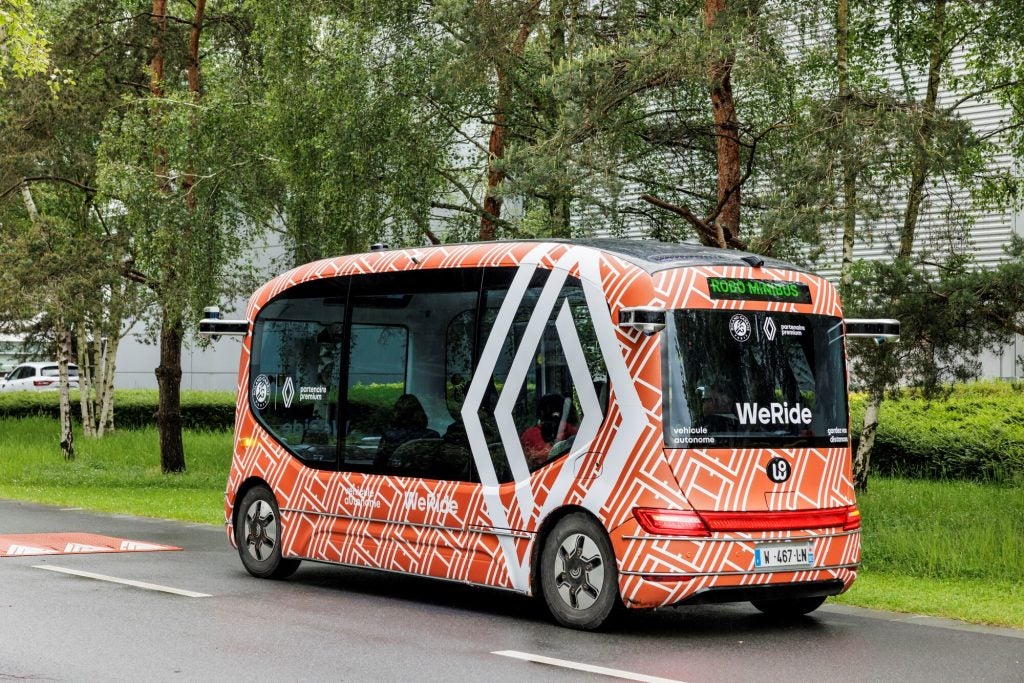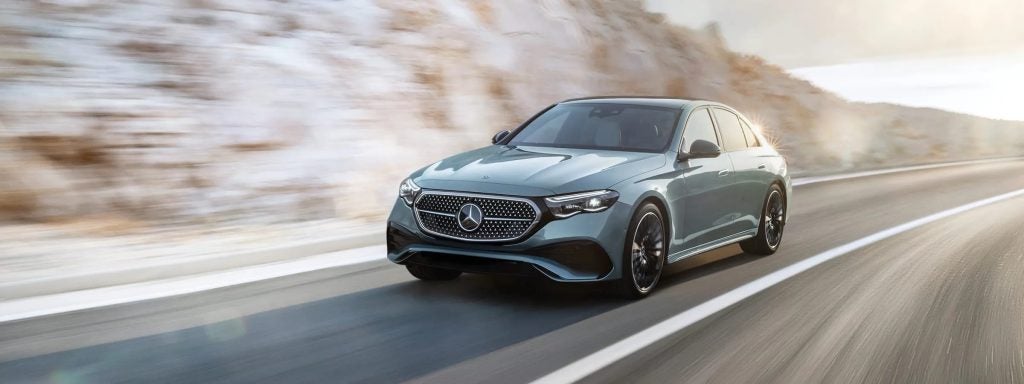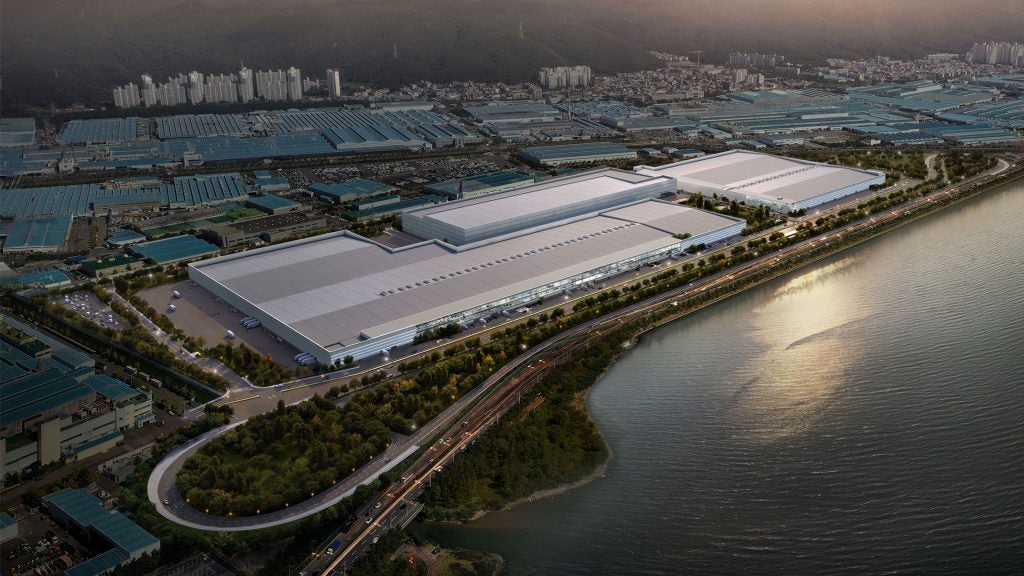Hyundai has completed South Korea’s first domestic highway journey with an autonomously navigated semi-trailer truck.
Hyundai’s Xcient lorry drove 40km on the highway between Uiwang and Incheon, carrying a large semi-trailer simulating cargo transportation.
“This successful demonstration proves that innovative autonomous driving technology can be used to transform the trade logistics industry,” said Hyundai director of Commercial Vehicle R&D Strategy Group, Maik Ziegler.
“At this stage, a human driver is still used to control the vehicle manually in certain situations, but I think we will achieve level 4 automation soon as we are constantly upgrading our technological capability.”
The demonstration was carried out using Hyundai’s Xcient model truck, which has a maximum load capacity of 40 tons. This was semi-equipped with a Society of Automotive Engineers (SAE) standard Level 3 autonomous driving system, enabling it to steer, accelerate or decelerate, as well as manoeuvre through traffic, all without human input. A human driver was on-board to take over manual control when required.
The vehicle was equipped with features which enabled it to maintain and change lanes during the natural flow of traffic, detect lane changes made by vehicles in front of it, navigate through tunnels, and perform a complete halt or accelerate according to road traffic.
How well do you really know your competitors?
Access the most comprehensive Company Profiles on the market, powered by GlobalData. Save hours of research. Gain competitive edge.

Thank you!
Your download email will arrive shortly
Not ready to buy yet? Download a free sample
We are confident about the unique quality of our Company Profiles. However, we want you to make the most beneficial decision for your business, so we offer a free sample that you can download by submitting the below form
By GlobalDataFor the demonstration the Ministry of Land, Infrastructure and Transport (MOLIT) issued a temporary autonomous driving licence for the first time to a heavy-duty truck.
The Test Route:
The test route is Hyundai Glovis’s parts transportation most frequently travelled section for vehicles heading to the Port of Incheon. This includes 40km in total of highway. The truck successfully completed the journey, travelling 40km in one hour, while keeping to the speed limit of 90km/h.
Hyundai Motor is planning to undertake further autonomous navigation technology tests in future in a variety of areas such as Busan and plans to concentrate on its enterprise development capabilities with the aim of early commercialisation of the technology.
Autonomous Truck Technology:
The semi-trailer lorry is around 3.5 times longer, 1.4 times wider and 9.2 times heavier than the average compact sedan, when comparing to an empty truck’s weight. This requires a detailed autonomous navigation system. Hyundai equipped sensors similar to the ones featured in autonomous sedans and additional sensors optimised for heavy-duty trucks, such as a hitch angle sensor and trailer rear radar sensor.
Technology includes ten different sensors, including three front and side-rear cameras, two frontal and rear radars, three Lidars in the front and sides and a hitch angle sensor in the trailer coupler, which computes the change in angle between the truck and trailer in real-time, allowing the truck to be safely stabilised in sharp turns.
The data collected by each sensor collaborates with the HD map and sends information to the electronic control module for localisation. The module makes decisions for each situation, controlling the speed, steering, and braking.
A new steering control system (MAHS : Motor Assist Hydraulic Steering) developed by Hyundai Mobis was also implemented, providing a steering mechanism which controls the steering angle depending on the decision made by the electronic control unit. This minimises the effort required to steer the vehicle, reducing driver fatigue.
“Hyundai Glovis’ success in utilising self-driving trucks as part of its delivery service proves self-driving technology is being utilised in actual logistics transport and can lead to mutual development,” added Hyundai Glovis head of Strategy and Planning Group, Sang-Sok Suh.
Hyundai is also investing in truck platooning technology.
Safety:
According to the Korean National Police Agency traffic accident statistics, trucks are involved in 10.8% of accidents each year, which is second to private vehicles at 53%. Also, the potential threat of a severe accident is relatively higher when a truck is involved in a collision, with a fatality rate of 3.7% versus 1.9% non-truck involved accidents.
The number of casualties from truck accidents is increasing every year. Truck drivers often travel long-distance overnight, which can cause sleep deprivation resulting in dangerous driving. Autonomous technology implemented into commercial trucks is expected to reduce this.
Hyundai Motor is working to prevent accidents and minimise related damage by implementing next-generation driver assistant systems into large-sized trucks and buses currently being sold in the market.
The company offers options such as Forward Collision-Avoidance Assist (FCA), Smart Cruise Control (SCC), and Lane Departure Warning (LDW) in its Xcient model and applied FCA and LDW as default options in all models of Hyundai Universe.
Hyundai Motor previously succeeded in level 4 autonomous driving with Ioniq vehicles in downtown Las Vegas last year and completed a 190km journey from Seoul to Pyeongchang with level 4 autonomously driven hydrogen electric NEXO and Genesis G80 vehicles during the Pyeongchang 2018 Olympic Winter Games.







